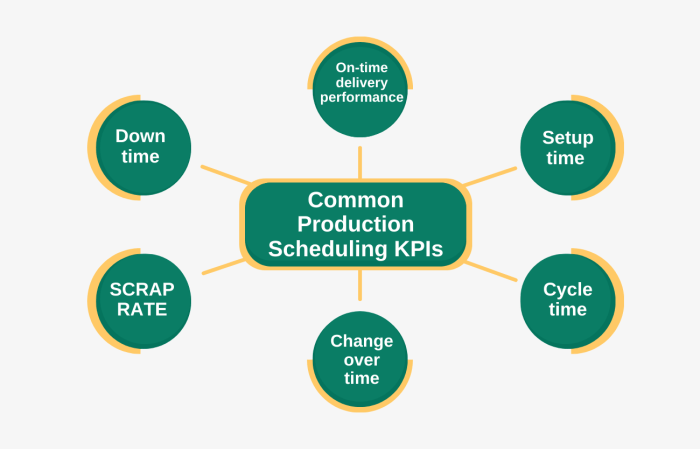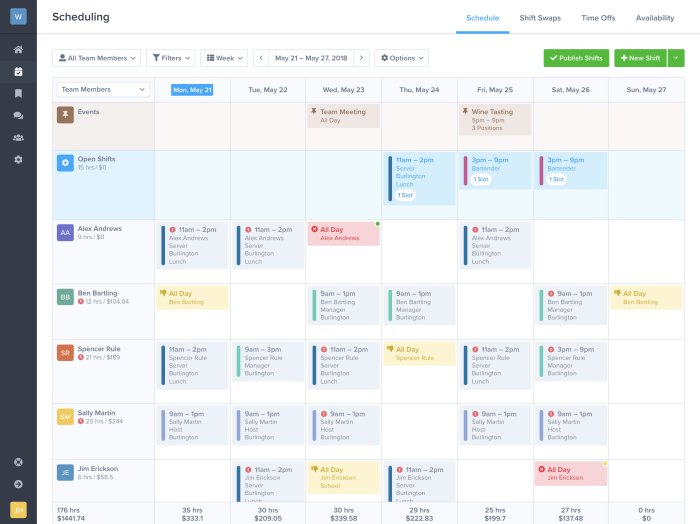Scheduling personnel is an example of an operations management: a crucial aspect of any organization’s success. Effective scheduling ensures that the right people are in the right place at the right time, optimizing productivity and efficiency. This comprehensive guide delves into the complexities of personnel scheduling, exploring its significance, types, influencing factors, techniques, and optimization strategies.
From fixed schedules to rotating shifts, various scheduling methods offer unique advantages and challenges. Understanding these nuances allows organizations to tailor schedules to their specific needs. Moreover, external factors such as employee availability, workload fluctuations, and customer demand play a pivotal role in shaping scheduling decisions.
Scheduling Personnel: Definition and Importance

Scheduling personnel is a crucial aspect of operations management that involves planning and allocating employees’ work hours to meet operational requirements. Effective personnel scheduling optimizes workforce utilization, ensures timely service delivery, and enhances organizational efficiency by aligning employee availability with workload fluctuations and customer demand.
Types of Personnel Scheduling
Personnel scheduling methods vary based on organizational needs and operational constraints. Common types include:
- Fixed Schedules:Employees work consistent hours each day and week, providing stability and predictability.
- Flexible Schedules:Employees can adjust their work hours within a defined range, offering flexibility and work-life balance.
- Rotating Schedules:Employees work different shifts or days of the week on a regular basis, ensuring equitable distribution of work and time off.
Factors Influencing Personnel Scheduling
Personnel scheduling is influenced by several factors:
- Employee Availability:Employee preferences, time off requests, and availability constraints must be considered.
- Workload Fluctuations:Seasonal variations, peak periods, and unexpected events impact staffing needs.
- Customer Demand:Service levels and customer expectations drive scheduling decisions to ensure adequate coverage during high-demand times.
- Labor Laws and Regulations:Compliance with labor laws regarding overtime, breaks, and rest periods is essential.
Scheduling Techniques and Tools
Various scheduling techniques and tools assist in optimizing personnel schedules:
- Manual Scheduling:Using spreadsheets or physical schedules to manually allocate employee hours.
- Scheduling Software:Automated systems that simplify scheduling, optimize workforce allocation, and track employee availability.
- Optimization Algorithms:Mathematical models that analyze workload patterns and employee constraints to create efficient schedules.
Performance Evaluation and Optimization
Evaluating the effectiveness of personnel scheduling is crucial for continuous improvement:
- Performance Metrics:Monitoring metrics such as employee satisfaction, absenteeism, and overtime costs.
- Employee Feedback:Gathering input from employees to identify areas for improvement.
- Scheduling Audits:Conducting regular reviews to assess scheduling practices and identify potential optimizations.
Case Studies and Examples, Scheduling personnel is an example of an operations management:
Real-world examples demonstrate the impact of effective personnel scheduling:
- Healthcare Industry:Optimizing nurse scheduling to ensure adequate staffing levels during peak patient hours.
- Retail Industry:Implementing flexible scheduling to accommodate seasonal fluctuations in customer demand.
- Manufacturing Industry:Using scheduling software to minimize overtime costs and improve employee work-life balance.
FAQ: Scheduling Personnel Is An Example Of An Operations Management:
What are the key benefits of effective personnel scheduling?
Improved productivity, reduced labor costs, enhanced employee morale, and optimized customer service.
How can organizations evaluate the effectiveness of their personnel scheduling?
Through metrics such as overtime hours, absenteeism, employee satisfaction surveys, and performance evaluations.

